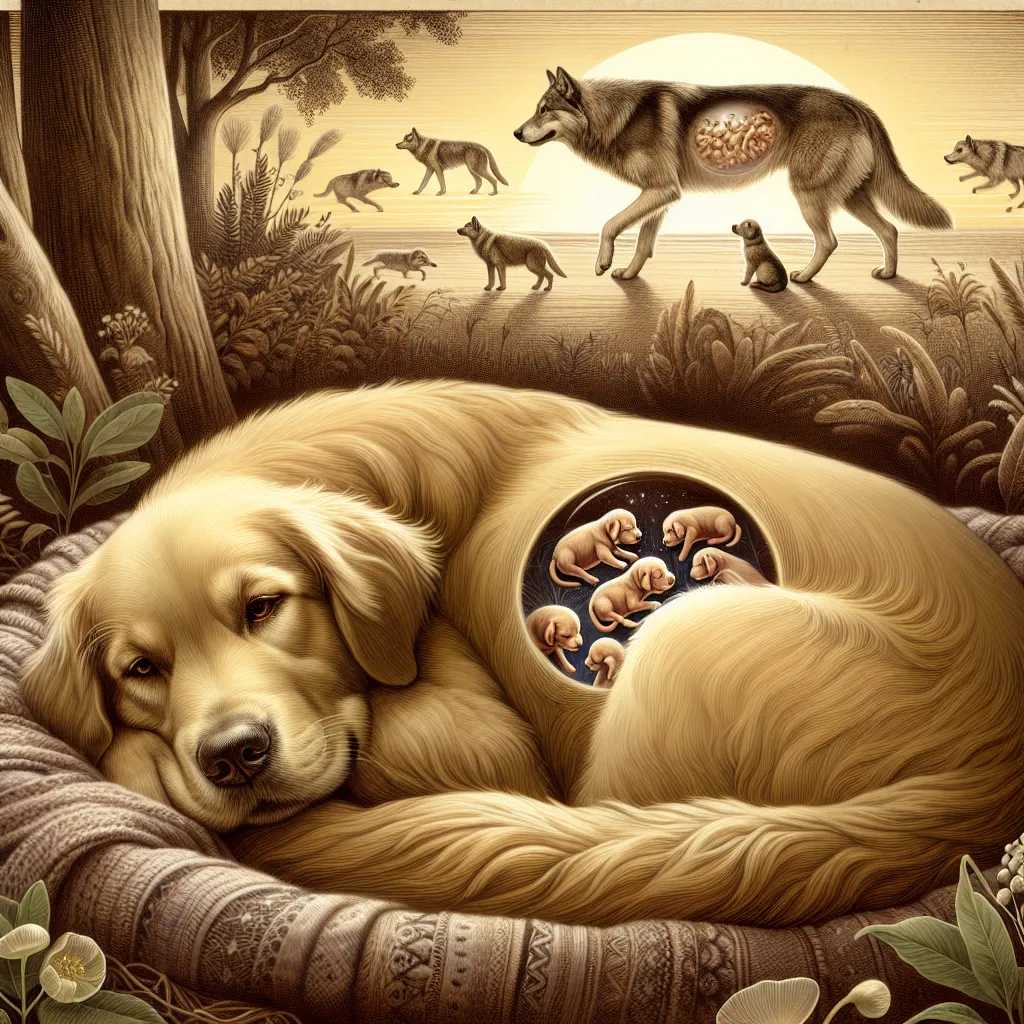Dogs first evolved around 12,000 years ago and have since become one of the few animals with a close relationship with humans. Today, they come in a wide variety of sizes, shapes, colors, and behaviors. On one end, we have the tiny Chihuahua, weighing less than a kilogram, while on the other, there’s the massive Neapolitan Mastiff at 70 kilograms. This level of diversity within a single species is unparalleled. Despite their differences, the gestation period for all dogs is roughly the same—about 63 days.
Let’s focus on a Golden Retriever and follow her journey from conception to birth. The female Golden Retriever typically releases ten to twelve eggs when she’s ready to mate. The male dog’s penis contains a bone that helps provide stability during mating, which usually happens vertically. He mounts her and, within seconds, ejaculates. They then enter a stage called the “tie,” where the male’s penis locks inside the female’s vagina, lasting anywhere from five minutes to an hour. This odd behavior hails back to their wild ancestors, who adopted this position for protection against attacks during mating.
Once fertilized, the retriever’s eggs travel towards the uterus. Over 63 days, these bundles of cells develop into puppies. About two weeks after conception, the pregnancy is well underway. Inside the uterus, the embryonic cells undergo a fascinating transformation called gastrulation. These cells fold in on themselves to form a cylindrical tube, creating a tissue patch known as the primitive streak. Smaller tissue patches, called organizers, give the developing cells instructions on what types of cells they should become, whether nerve, skin, head, or tail cells. The nine embryos eventually attach to the uterine wall, with contractions pushing them into an evenly spaced arrangement.
By the third week since conception, the embryos are about the size of peas, and the female dog starts showing signs of pregnancy. Curiously, even non-pregnant dogs can exhibit similar behaviors, a phenomenon known as pseudo or phantom pregnancy. This behavior links back to their ancestry—the gray wolf. In the wild, only the dominant pair of a wolf pack breeds, ensuring the strongest genes are passed on. The dominant female is not just a mother but also the primary hunter. To keep the pack functional, unmated females go through false pregnancies. When the dominant female’s pups are born, these other females help in suckling and raising the young, allowing the dominant female to return to hunting quickly.
Even today, domestic dogs can show signs of this behavior during a phantom pregnancy, such as nursing toys or making nests. This fascinating glimpse into the world of dog reproduction highlights the incredible journey from conception to birth and the deep-rooted behaviors passed down through generations.





